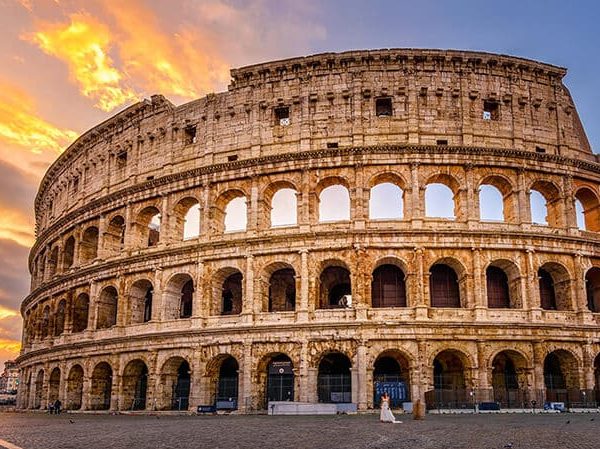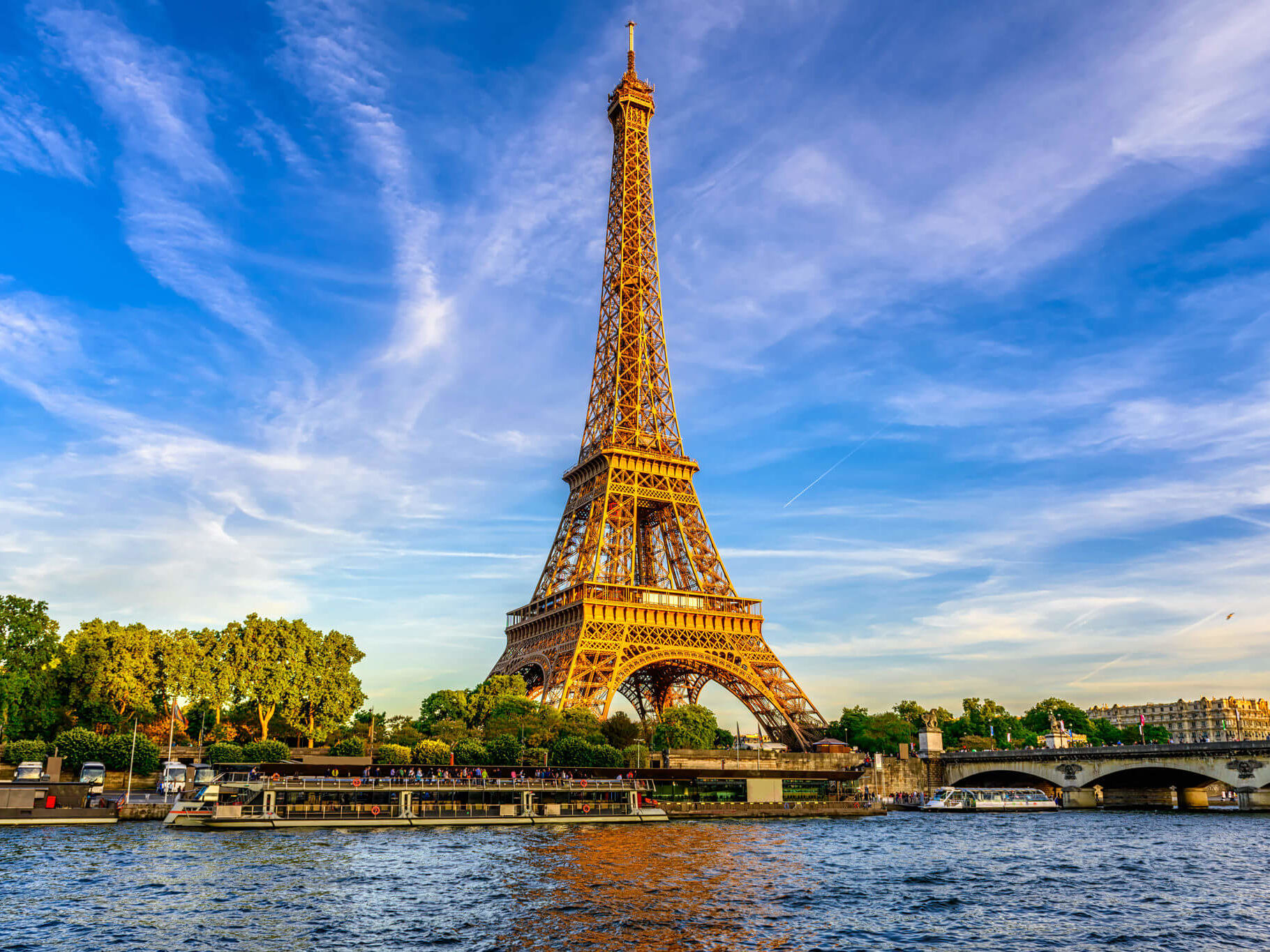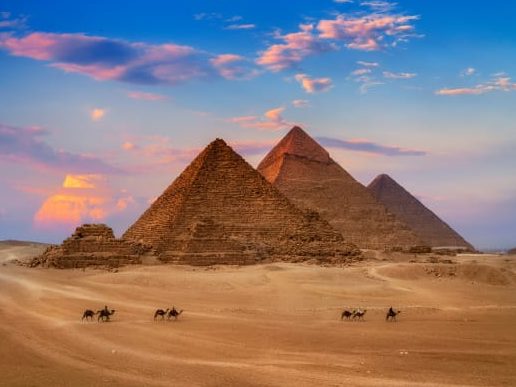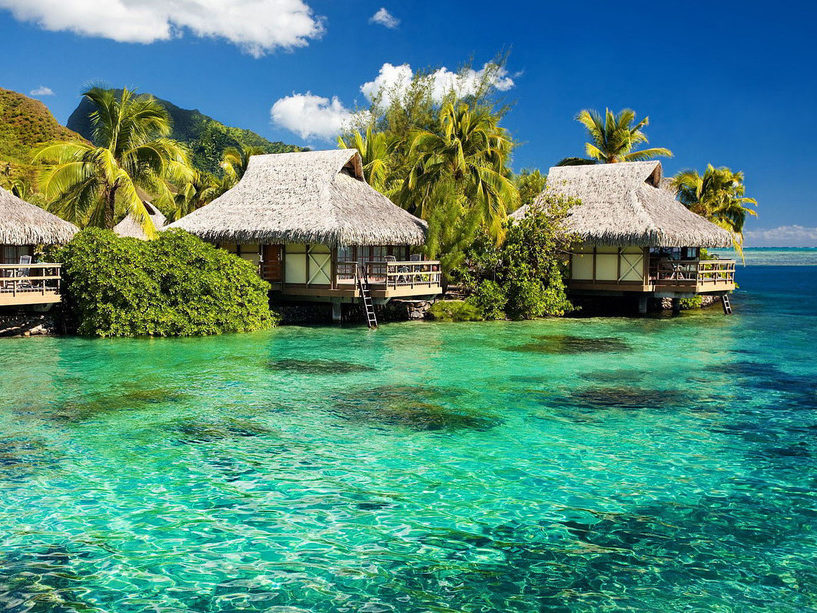Morocco
Morocco is the northwesternmost country in the Maghreb region of North Africa. It overlooks the Mediterranean Sea to the north and the Atlantic Ocean to the west, and has land borders with Algeria to the east, and the disputed territory of Western Sahara to the south. Morocco also claims the Spanish exclaves of Ceuta, Melilla and Peñón de Vélez de la Gomera, and several small Spanish-controlled islands off its coast. It spans an area of 446,300 km2 (172,300 sq mi) or 710,850 km2 (274,460 sq mi), with a population of roughly 37 million. Its official and predominant religion is Islam, and the official languages are Arabic and Berber; the Moroccan dialect of Arabic and French are also widely spoken. Moroccan identity and culture is a vibrant mix of Berber, Arab, and European cultures. Its capital is Rabat, while its largest city is Casablanca.
Inhabited since the Paleolithic Era over 90,000 years ago, the first Moroccan state was established by Idris I in 788. It was subsequently ruled by a series of independent dynasties, reaching its zenith as a regional power in the 11th and 12th centuries, under the Almoravid and Almohad dynasties, when it controlled most of the Iberian Peninsula and the Maghreb. In the 15th and 16th centuries, Morocco faced external threats to its sovereignty, with Portugal seizing some territory and the Ottoman Empire encroaching from the east. The Marinid and Saadi dynasties otherwise resisted foreign domination, and Morocco was the only North African nation to escape Ottoman dominion. The Alaouite dynasty, which rules the country to this day, seized power in 1631, and over the next two centuries expanded diplomatic and commercial relations with the Western world. Morocco’s strategic location near the mouth of the Mediterranean drew renewed European interest; in 1912, France and Spain divided the country into respective protectorates, reserving an international zone in Tangier. Following intermittent riots and revolts against colonial rule, in 1956 Morocco regained its independence and reunified.
Since independence, Morocco has remained relatively stable. It has the fifth-largest economy in Africa and wields significant influence in both Africa and the Arab world; it is considered a middle power in global affairs and holds membership in the Arab League, the Union for the Mediterranean, and the African Union. Morocco is a unitary semi-constitutional monarchy with an elected parliament. The executive branch is led by the King of Morocco and the prime minister, while legislative power is vested in the two chambers of parliament: the House of Representatives and the House of Councillors. Judicial power rests with the Constitutional Court, which may review the validity of laws, elections, and referenda. The king holds vast executive and legislative powers, especially over the military, foreign policy and religious affairs; he can issue decrees called dahirs, which have the force of law, and can also dissolve the parliament after consulting the prime minister and the president of the constitutional court.
Morocco claims ownership of the non-self-governing territory of Western Sahara, which it has designated its Southern Provinces. In 1975, after Spain agreed to decolonise the territory and cede its control to Morocco and Mauritania, a guerrilla war broke out between those powers and some of the local inhabitants. In 1979, Mauritania relinquished its claim to the area, but the war continued to rage. In 1991, a ceasefire agreement was reached, but the issue of sovereignty remained unresolved. Today, Morocco occupies two-thirds of the territory, and efforts to resolve the dispute have thus far failed to break the political deadlock.
Etymology
Morocco’s full Arabic name al-Mamlakah al-Maghribiyyah (المملكة المغربية) may best be translated as ‘Kingdom of the West’, although ‘the West’ in Arabic is الغرب al-Gharb. The name can also be translated as ‘kingdom of the evening;. Medieval Arab historians and geographers sometimes referred to Morocco as al-Maghrib al-Aqṣá (المغرب الأقصى (meaning ‘the Farthest West’) to distinguish it from neighbouring regions then called al-Maghrib al-Awsaṭ (المغرب الأوسط, meaning ‘the Middle West’) and al-Maghrib al-Adná (المغرب الأدنى, meaning ‘the Nearest West’).
The word Morocco is derived from the name of the city of Marrakesh, which was its capital under the Almoravid dynasty and the Almohad Caliphate. The origin of the name Marrakesh is disputed, but it most likely comes from the Berber words amur (n) akush (ⴰⵎⵓⵔ ⵏ ⴰⴽⵓⵛ), meaning ‘Land of God’. The modern Berber name for Marrakesh is Mṛṛakc (in the Berber Latin script). In Turkish, Morocco is known as Fas, a name derived from its ancient capital of Fes. However, in other parts of the Islamic world, for example in Egyptian and Middle Eastern Arabic literature before the mid-20th century, the name commonly used to refer to Morocco was Marrakesh (مراكش).
That name is still used for the nation today in some languages, including Persian, Urdu, and Punjabi. The English name Morocco is an anglicisation of the Spanish name for the country, Marruecos. That Spanish name was also the basis for the old Tuscan word for the country, Morrocco, from which the modern Italian word for the country, Marocco, is derived.
History
The area of present-day Morocco has been inhabited since at least Paleolithic times, beginning sometime between 190,000 and 90,000 BC. A recent publication has suggested that there is evidence for even earlier human habitation of the area: Homo sapiens fossils that had been discovered in the late 2000s near the Atlantic coast in Jebel Irhoud were recently dated to roughly 315,000 years ago. During the Upper Paleolithic, the Maghreb was more fertile than it is today, resembling a savanna, in contrast to its modern arid landscape. Twenty-two thousand years ago, the pre-existing Aterian culture was succeeded by the Iberomaurusian culture, which shared similarities with Iberian cultures. Skeletal similarities have been suggested between the human remains found at Iberomaurusian “Mechta-Afalou” burial sites and European Cro-Magnon remains. The Iberomaurusian culture was succeeded by the Beaker culture in Morocco.
Mitochondrial DNA studies have discovered a close ancestral link between Berbers and the Saami of Scandinavia. This evidence supports the theory that some of the peoples who had been living in the Franco-Cantabrian refuge area of southwestern Europe during the late-glacial period migrated to northern Europe, contributing to its repopulation after the last ice age.
In the early part of the Classical Antiquity period, Northwest Africa and Morocco were slowly drawn into the wider emerging Mediterranean world by the Phoenicians, who established trading colonies and settlements there, the most substantial of which were Chellah, Lixus, and Mogador. Mogador was established as a Phoenician colony as early as the 6th century BC.
Morocco later became a realm of the Northwest African civilisation of ancient Carthage, and part of the Carthaginian empire. The earliest known independent Moroccan state was the Berber kingdom of Mauretania, under King Baga. This ancient kingdom (not to be confused with the modern state of Mauritania) flourished around 225 BC or earlier.
Mauretania became a client kingdom of the Roman Empire in 33 BC. Emperor Claudius annexed Mauretania directly in 44 AD, making it a Roman province ruled by an imperial governor (either a procurator Augusti, or a legatus Augusti pro praetore).
During the so-called “crisis of the 3rd century,” parts of Mauretania were reconquered by Berber tribes. As a result, by the late 3rd century, direct Roman rule had become confined to a few coastal cities, such as Septum (Ceuta) in Mauretania Tingitana and Cherchell in Mauretania Caesariensis. When, in 429 AD, the area was devastated by the Vandals, the Roman Empire lost its remaining possessions in Mauretania, and local Mauro-Roman kings assumed control of them. In the 530s, the Eastern Roman Empire, under Byzantine control, re-established direct imperial rule of Septum and Tingi, fortified Tingis, and erected a church.
Climate
The country’s Mediterranean climate is similar to that of southern California, with lush forests in the northern and central mountain ranges of the country, giving way to drier conditions and inland deserts further southeast. The Moroccan coastal plains experience remarkably moderate temperatures even in summer, owing to the effect of the cold Canary Current off its Atlantic coast.
In the Rif, Middle and High Atlas Mountains, there exist several different types of climates: Mediterranean along the coastal lowlands, giving way to a humid temperate climate at higher elevations with sufficient moisture to allow for the growth of different species of oaks, moss carpets, junipers, and Atlantic fir which is a royal conifer tree endemic to Morocco. In the valleys, fertile soils and high precipitation allow for the growth of thick and lush forests. Cloud forests can be found in the west of the Rif Mountains and Middle Atlas Mountains. At higher elevations, the climate becomes alpine in character, and can sustain ski resorts.
Southeast of the Atlas mountains, near the Algerian borders, the climate becomes very dry, with long and hot summers. Extreme heat and low moisture levels are especially pronounced in the lowland regions east of the Atlas range due to the rain shadow effect of the mountain system. The southeasternmost portions of Morocco are very hot, and include portions of the Sahara Desert, where vast swathes of sand dunes and rocky plains are dotted with lush oases.
In contrast to the Sahara region in the south, coastal plains are fertile in the central and northern regions of the country, and comprise the backbone of the country’s agriculture, in which 95% of the population live. The direct exposure to the North Atlantic Ocean, the proximity to mainland Europe and the long stretched Rif and Atlas mountains are the factors of the rather European-like climate in the northern half of the country. That makes Morocco a country of contrasts. Forested areas cover about 12% of the country while arable land accounts for 18%. Approximately 5% of Moroccan land is irrigated for agricultural use.
In general, apart from the southeast regions (pre-Saharan and desert areas), Morocco’s climate and geography are very similar to the Iberian peninsula. Thus Morocco has the following climate zones:
- Mediterranean: Dominates the coastal Mediterranean regions of the country, along the (500 km strip), and some parts of the Atlantic coast. Summers are hot to moderately hot and dry, average highs are between 29 °C (84.2 °F) and 32 °C (89.6 °F). Winters are generally mild and wet, daily average temperatures hover around 9 °C (48.2 °F) to 11 °C (51.8 °F), and average low are around 5 °C (41.0 °F) to 8 °C (46.4 °F), typical to the coastal areas of the west Mediterranean. Annual Precipitation in this area vary from 600 to 800 mm in the west to 350–500 mm in the east. Notable cities that fall into this zone are Tangier, Tetouan, Al Hoceima, Nador and Safi.
- Sub-Mediterranean: It influences cities that show Mediterranean characteristics, but remain fairly influenced by other climates owing to their either relative elevation, or direct exposure to the North Atlantic Ocean. We thus have two main influencing climates:
- Oceanic: Determined by the cooler summers, where highs are around 27 °C (80.6 °F) and in terms of the Essaouira region, are almost always around 21 °C (69.8 °F). The medium daily temperatures can get as low as 19 °C (66.2 °F), while winters are chilly to mild and wet. Annual precipitation varies from 400 to 700 mm. Notable cities that fall into this zone are Rabat, Casablanca, Kénitra, Salé and Essaouira.
- Continental: Determined by the bigger gap between highs and lows, that results in hotter summers and colder winters, than found in typical Mediterranean zones. In summer, daily highs can get as high as 40 °C (104.0 °F) during heat waves, but usually are between 32 °C (89.6 °F) and 36 °C (96.8 °F). However, temperatures drop as the sun sets. Night temperatures usually fall below 20 °C (68.0 °F), and sometimes as low as 10 °C (50.0 °F) in mid-summer. Winters are cooler, and can get below the freezing point multiple times between December and February. Also, snow can fall occasionally. Fès for example registered −8 °C (17.6 °F) in winter 2005. Annual precipitation varies between 500 and 900 mm. Notable cities are Fès, Meknès, Chefchaouen, Beni-Mellal and Taza.
- Continental: Dominates the mountainous regions of the north and central parts of the country, where summers are hot to very hot, with highs between 32 °C (89.6 °F) and 36 °C (96.8 °F). Winters on the other hand are cold, and lows usually go beyond the freezing point. And when cold damp air comes to Morocco from the northwest, for a few days, temperatures sometimes get below −5 °C (23.0 °F). It often snows abundantly in this part of the country. Precipitation varies between 400 and 800 mm. Notable cities are Khenifra, Imilchil, Midelt and Azilal.
- Alpine: Found in some parts of the Middle Atlas Mountain range and the eastern part of the High Atlas Mountain range. Summers are very warm to moderately hot, and winters are longer, cold and snowy. Precipitation varies between 400 and 1200 mm. In summer highs barely go above 30 °C (86.0 °F), and lows are cool and average below 15 °C (59.0 °F). In winters, highs average around 8 °C (46.4 °F), and lows go well below the freezing point. In this part of country, there are many ski resorts, such as Oukaimeden and Mischliefen. Notable cities are Ifrane, Azrou and Boulmane.
- Semi-arid: This type of climate is found in the south of the country and some parts of the east of the country, where rainfall is lower and annual precipitations are between 200 and 350 mm. However, one usually finds Mediterranean characteristics in those regions, such as the precipitation pattern and thermal attributes. Notable cities are Agadir, Marrakesh and Oujda.
Languages
Morocco’s official languages are Arabic and Berber. The country’s distinctive group of Moroccan Arabic dialects is referred to as Darija. Approximately 89.8% of the whole population can communicate to some degree in Moroccan Arabic. The Berber language is spoken in three dialects (Tarifit, Tashelhit and Central Atlas Tamazight). In 2008, Frédéric Deroche estimated that there were 12 million Berber speakers, making up about 40% of the population. The 2004 population census reported that 28.1% of the population spoke Berber.
French is widely used in governmental institutions, media, mid-size and large companies, international commerce with French-speaking countries, and often in international diplomacy. French is taught as an obligatory language in all schools. In 2010, there were 10,366,000 French-speakers in Morocco, or about 32% of the population.
According to the 2004 census, 2.19 million Moroccans spoke a foreign language other than French.[158] English, while far behind French in terms of number of speakers, is the first foreign language of choice, since French is obligatory, among educated youth and professionals.
According to Ethnologue, as of 2016, there are 1,536,590 individuals (or approximately 4.5% of the population) in Morocco who speak Spanish. Spanish is mostly spoken in northern Morocco and the Spanish Sahara because Spain had previously occupied those areas. A significant portion of northern Morocco receives Spanish media, television signal and radio airwaves, which reportedly facilitate competence in the language in the region.
After Morocco declared independence in 1956, French and Arabic became the main languages of administration and education, causing the role of Spanish to decline.[164]
According to a 2012 study by the Government of Spain, 98% of Moroccans spoke Moroccan Arabic, 63% spoke French, 43% Amazigh, 14% spoke English, and 10% spoke Spanish.
Although seldom spoken in Morocco proper, the vast diaspora of Moroccans in the Netherlands or in the Dutch-speaking part of Belgium who are often dual citizens, tend to be speaking the Dutch language either as joint mother tongue or second language. Besides in Dutch-speaking areas, there are also vast numbers of Moroccans elsewhere outside of French and Spanish-speaking Europe. Even so, they form a lower percentage of inhabitants in those countries.
Culture
Morocco is a country with a rich culture and civilisation. Through Moroccan history, it has hosted many people coming from East (Phoenicians, Jews and Arabs), South (Sub-Saharan Africans) and North (Romans, Andalusians). All those civilisations have affected the social structure of Morocco.
Since independence, a veritable blossoming has taken place in painting and sculpture, popular music, amateur theatre, and filmmaking. The Moroccan National Theatre (founded 1956) offers regular productions of Moroccan and French dramatic works. Art and music festivals take place throughout the country during the summer months, among them the World Sacred Music Festival at Fès.
Each region possesses its own specificities, thus contributing to the national culture and to the legacy of civilization. Morocco has set among its top priorities the protection of its diverse legacy and the preservation of its cultural heritage.
Culturally speaking, Morocco has always been successful in combining its Berber, Jewish and Arabic cultural heritage with external influences such as the French and the Spanish and, during the last decades, the Anglo-American lifestyles.
Cuisine
Moroccan cuisine is considered one of the most diversified cuisines in the world. This is a result of the centuries-long interaction of Morocco with the outside world. The cuisine of Morocco is mainly a fusion of Moorish, European and Mediterranean cuisines.
Spices are used extensively in Moroccan cuisine. While spices have been imported to Morocco for thousands of years, many ingredients such as saffron from Tiliouine, mint and olives from Meknes, and oranges and lemons from Fez, are home-grown. Chicken is the most widely eaten meat in Morocco. The most commonly eaten red meat in Morocco is beef; lamb is preferred but is relatively expensive. The main Moroccan dish most people are familiar with is couscous, the old national delicacy.
Beef is the most commonly eaten red meat in Morocco, usually eaten in a Tagine with vegetables or legumes. Chicken is also very commonly used in Tagines, knowing that one of the most famous tagine is the Tagine of Chicken, potatoes and olives. Lamb is also consumed, but as Northwest African sheep breeds store most of their fat in their tails, Moroccan lamb does not have the pungent flavour that Western lamb and mutton have. Poultry is also very common, and the use of seafood is increasing in Moroccan food. In addition, there are dried salted meats and salted preserved meats such as kliia/khlia and “g’did” which are used to flavor tagines or used in “el ghraif” a folded savory Moroccan pancake.
Among the most famous Moroccan dishes are Couscous, Pastilla (also spelled Bsteeya or Bestilla), Tajine, Tanjia and Harira. Although the latter is a soup, it is considered a dish in itself and is served as such or with dates especially during the month of Ramadan. Pork consumption is forbidden in accordance with Sharia, religious laws of Islam.
A big part of the daily meal is bread. Bread in Morocco is principally from durum wheat semolina known as khobz. Bakeries are very common throughout Morocco and fresh bread is a staple in every city, town and village. The most common is whole grain coarse ground or white flour bread. There are also a number of flat breads and pulled unleavened pan-fried breads.
The most popular drink is “atai”, green tea with mint leaves and other ingredients. Tea occupies a very important place in the culture of Morocco and is considered an art form. It is served not only at mealtimes but all through the day, and it is especially a drink of hospitality, commonly served whenever there are guests. It is served to guests, and it is impolite to refuse it.
Categories: Africa
More Lifehack Videos





